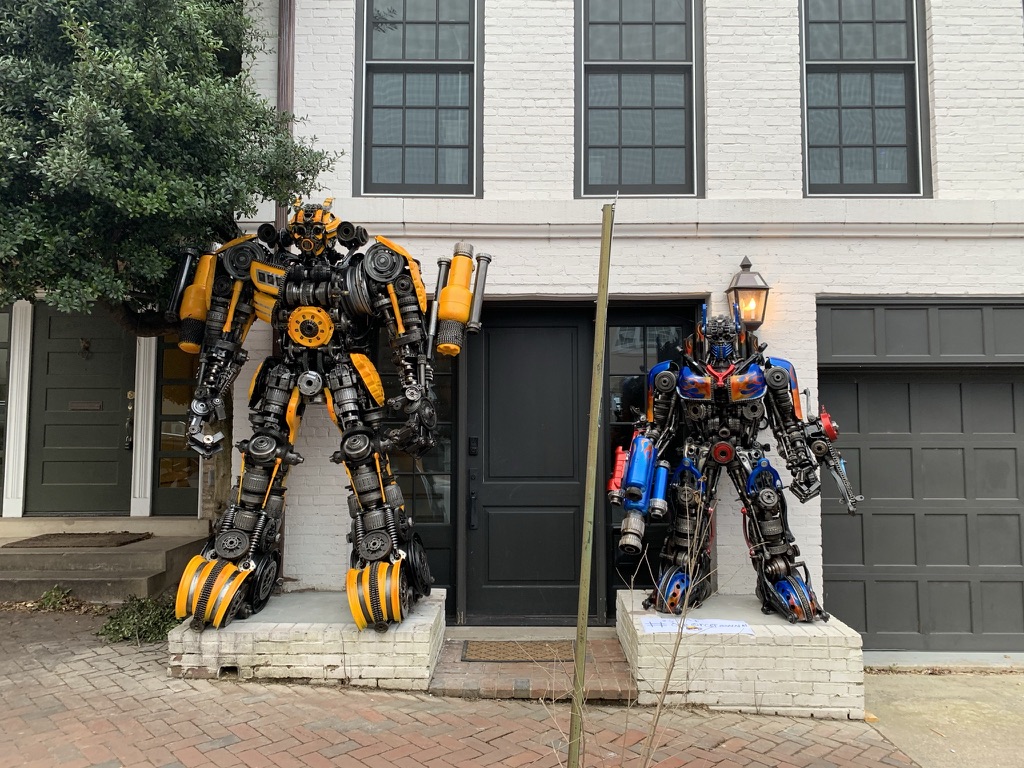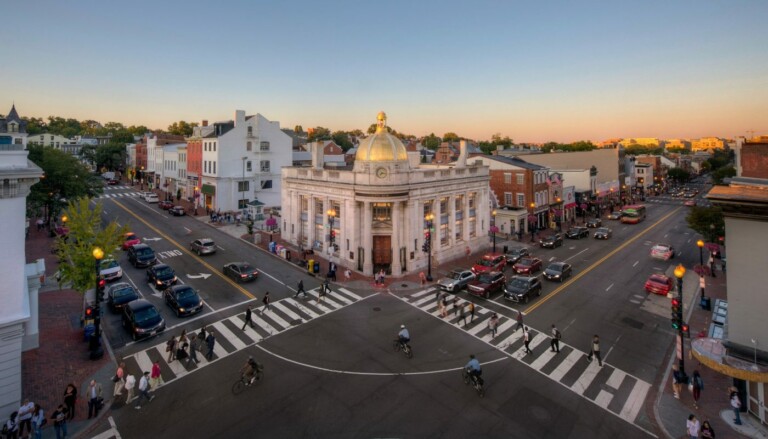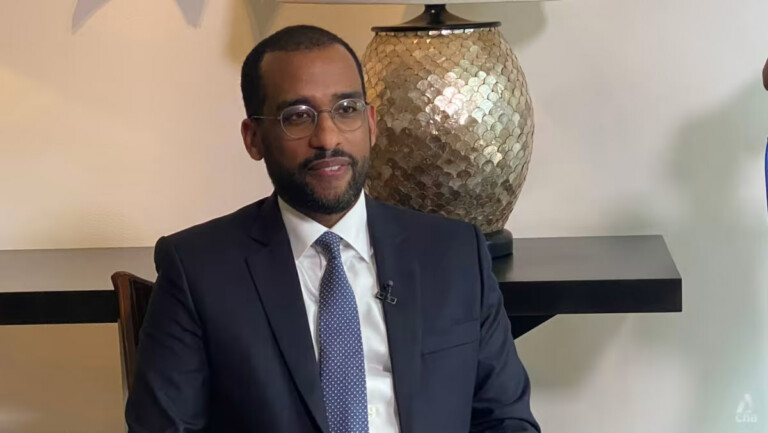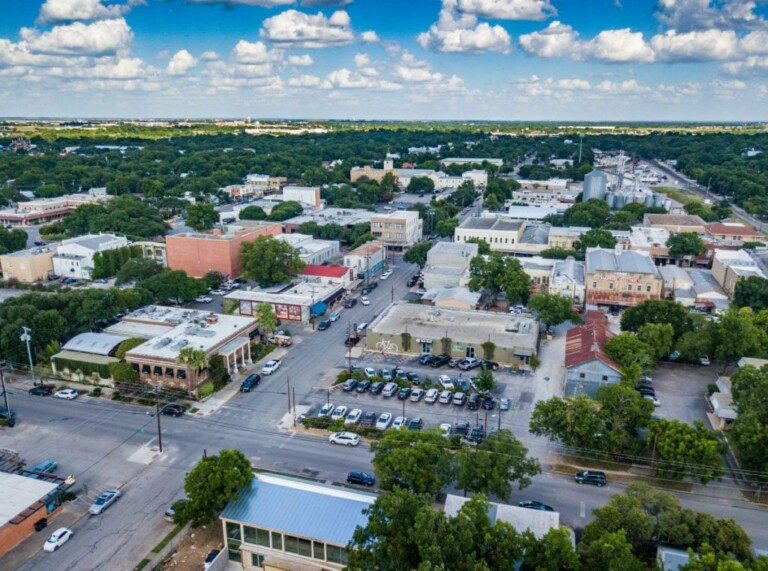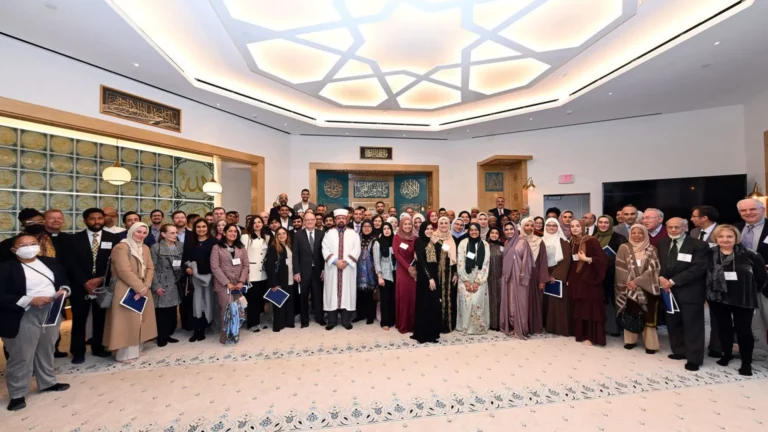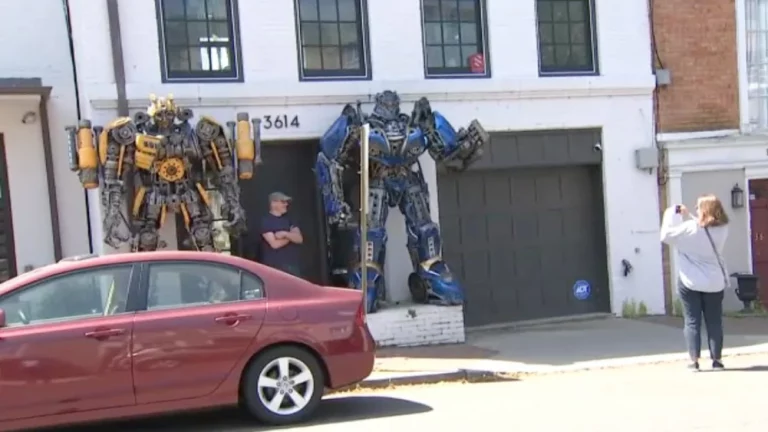Where the Decepticons failed to defeat Optimus Prime and the Autobots, an obscure federal board may well have succeeded.
The Old Georgetown Board unanimously voted Thursday to deny a Georgetown University neuroscientist’s request to keep a pair of massive Transformers sculptures posted outside his historic rowhouse in the neighborhood, potentially bringing to an end a years-long only-in-D.C. fight over the metallic pop-culture icons that have enthralled many a visitor just as they rankled many a neighbor.
“We hope that these statues will disappear in the not-too-distant future,” said Alan Brangman, chair of the three-person federal board that reviews any exterior changes made to homes and businesses in the Georgetown historic district.
“They need to be removed immediately,” said board member Ashley Wilson.
But whether that actually happens remains to be seen. Dr. Newton Howard, who put them up outside his home, said in an email on Thursday afternoon that he’ll fight to keep them in place.
“I will defend those sculptures from being taken down by anyone. Children love them, they even leave flowers for them sometimes,” he wrote. “I cannot let negative thinking and outdated thoughts prevail over progressive impact for love and inclusion.”
It was just over two years ago that Howard placed the custom-built sculptures of Optimus Prime and Bumblebee — each standing between six and 10 feet tall, and made of repurposed car parts — outside his $4 million rowhouse on Prospect Street NW, only a block from Georgetown University. The sculptures attracted almost immediate attention in the staid, brick-strewn historic neighborhood, but they also drew complaints from some neighbors who complained that Howard had placed the hulking sculptures on a public sidewalk and without concern for the neighborhood’s historic aesthetics.
Howard insisted that the sculptures were art that expressed his fascination with idea of humans coexisting with machines, and argued that they were placed on either side of his front door where planters were once located; many homes along Prospect Street similarly have space for planters jutting out onto the sidewalk.
But the rules of the historic neighborhood won out: In April 2021 Howard was forced to ask the Old Georgetown Board for permission to keep the sculptures outside his home, but members said they were incompatible with the neighborhood’s historic character and had to be removed. They did give him a reprieve, though, granting him a temporary six-month permit to keep them up.
But much like the Transformers movie franchise, things didn’t end there.
Howard never removed the sculptures; in fact, he switched out Optimus Prime for an even bigger Optimus Prime, and put the smaller one on the roof of his house. (It can be seen from the street; more on this later.) Crowds kept coming to view the Transformers, and a reviewer from the D.C. Office of Planning found the sculptures “to be a lively addition to the streetscape” and said they did not impede passage on the sidewalk or pose any other risk.
City officials quietly pushed Howard to secure the sculptures to the house’s facade, and those same officials pushed Howard to again apply for a public space permit, which would again require consideration from the Old Georgetown Board. Before that, the local Advisory Neighborhood Commission has to weigh in, which it did earlier this week. And just as in past debates, the Transformers drew passionate opinions on both sides.
“These are massive robots. They require anchors to the facade, and were installed with no permits, no safety or engineering study. In the last 25 years, we’ve had numerous earthquakes in this area. Children climb onto these structures,” said Catherine Emmerson, co-founder of the Prospect Street Citizens Association. “We have motorcycle gangs that show up and block the middle of the street to take photos, we have cars that idle, we have tour buses… you name it, we have it. We have no access to our sidewalks. People yell and spit at us if we don’t stop when they want to take a selfie. Disruptive is a tame word for what we’ve had to endure over the last 27 months.”
“Please don’t allow a deep-pocketed motivated neighbor to define for our neighborhood what our aesthetic should be. This is not a private property issue. It is an intrusion into public space,” she concluded.
Commissioner John DiPierri, who represents students at Georgetown University, differed. “We have to recognize that not every neighbor considers these statues disruptive. All the university students who live across the street… consider these Transformers to be of profound public importance,” he said.
The ANC ultimately voted to oppose Howard’s request for a public space permit, saying he had failed to consistently engage with the commission and had not followed the same process other neighbors do. (It remains unclear whether other neighbors have had to request public space permits for planter boxes or other things they have outside their homes, though.)
The commissioners did add that they appreciated public art and Howard’s desire to express himself, and wanted to work with him to have the sculptures moved somewhere else in Georgetown so they could remain on display.
During its meeting on Thursday, the Old Georgetown Board dispensed with the matter quickly: the members declared that the sculptures are not compatible with the historic neighborhood around them and must be removed. But to add insult to injury, they also ruled that Howard has to seek a permit to keep his smaller Optimus Prime sculpture on the roof of his house, since it can be seen from the street.
In an interview with DCist/WAMU last December, Howard seemed bewildered by the entire situation.
“People have stuff on their planters, from Santa to a foreign flag,” he said. “Why is this one such a big deal and confusing them and so overcomplicated for no reason? I have no idea.”
Source : Dcist

